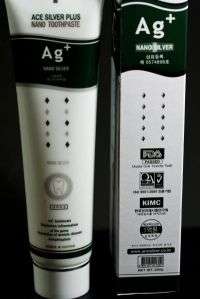New nanotech products hitting the market at the rate of 3-4 per week

New nanotechnology consumer products are coming on the market at the rate of 3-4 per week, a finding based on the latest update to the nanotechnology consumer product inventory maintained by the Project on Emerging Nanotechnologies (PEN).
One of the new items among the more than 600 products now in the inventory is Swissdent Nanowhitening Toothpaste with “calcium peroxides, in the form of nano-particles.” Today, in testimony before the Senate Commerce Committee, PEN Project Director David Rejeski cited Ace Silver Plus—another of the nine nano toothpastes in the inventory—as an example of the upsurge in nanotechnology consumer products in stores. The hearing marks the start of U.S. Senate debate on the future direction of the annual $1.5 billion federal investment in nanotechnology research and development (R&D).
The number of consumer products using nanotechnology has grown from 212 to 609 since PEN launched the world’s first online inventory of manufacturer-identified nanotech goods in March 2006. Health and fitness items, which includes cosmetics and sunscreens, represent 60 percent of inventory products. The colorful and searchable list of nanotechnology merchandise—containing everything from nanotech diamonds and cooking oil, to golf clubs and iPhones—is available free at .
There are 35 automotive products in the PEN inventory, including the Hummer H2. General Motors Corporation bills the H2 as having a cargo bed that “uses about seven pounds of molded in color nanocomposite parts for its trim, center bridge, sail panel and box rail protector.”
Nanoscale silver is the most cited nanomaterial used. It is found in 143 products or over 20 percent of the inventory. Carbon, including carbon nanotubes and fullerenes, is the second highest nanoscale material cited. Other nanoscale materials explicitly referenced in products are zinc (including zinc oxide) and titanium (including titanium dioxide), silica and gold.
While polls show most Americans know little or nothing about nanotechnology, in 2006 nanotechnology was incorporated into more than $50 billion in manufactured goods. By 2014, Lux Research estimates $2.6 trillion in manufactured goods will incorporate nanotechnology—or about 15 percent of total global output. Despite a 2006 worldwide investment of $12.4 billion in nanotech R&D, comparatively little was spent on examining nanotechnology’s potential environmental, health and safety risks.
“Public trust is the ‘dark horse’ in nanotechnology’s future,” says Rejeski in his testimony. “If government and industry do not work to build public confidence in nanotechnology, consumers may reach for the ‘No-Nano’ label in the future and investors will put their money elsewhere.”
According to Rejeski, “The use of nanotechnology in consumer products and industrial applications is growing rapidly, with the products listed in the PEN inventory showing just the tip of the iceberg. Public perceptions about risks—real and perceived—can have large economic consequences. How consumers respond to these early products—in food, electronics, health care, clothing and cars—is a litmus test for broader market acceptance of nanotechnologies in the future.”
Source: Project on Emerging Nanotechnologies





















